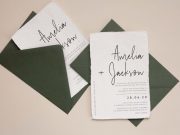[ad_1]
Last year, NPR’s Planet Money made a t-shirt. And, they produced a show that followed it – all the way from cotton seed to completion. Because we love to talk about the life of a piece of clothing (yeah, we’re re-sale nerds), we loved this piece. It perfectly explains how many resources go into making brand-new clothing – in this case, a simple t-shirt. We wanted to share with our readers what this journey looks like.
1. First off, the cotton was grown on a farm in the Mississippi Delta.

The cotton seeds were planted and watered. After they were harvested, they were placed into bales.

2. The completed bales were sent to factories in Indonesia where they were spun into yarn. The process is almost completely mechanized.

3. The yarn was then sent to Bangladesh (for the men’s shirts) and Columbia (for the women’s shirts) where it was knitted, dyed and sewn.

Above, we see knitting machines in Bangladesh producing the soft t-shirt material. Below, factory workers sew in Cartagena, Columbia.

4. The sewn shirts were completed, placed into a container and loaded onto a ship that took them to Miami.

5. The shirts arrived in Brooklyn, NY where they were printed with a hipster design.

WHEW!
As recently as the late 1800’s, most people had very limited wardrobes – two handwoven dresses and maybe a coat. It was really hard and expensive to make clothes. These days, you can get an H&M dress for the price of a chicken McNuggets value meal. And, you can buy a lot of them.
As a result, we’re out of the habit of thinking about where our clothes come from. How many hands, machines, countries and people does it take to get something as simple as a t-shirt into our closets? Maybe it’s time to give the humble t-shirt a little respect. Choose wisely. Buy the good stuff. Wash it carefully. Treat it with love. Then, maybe, pass it along.
Images courtesy of NPR.
[ad_2]
Source link


































